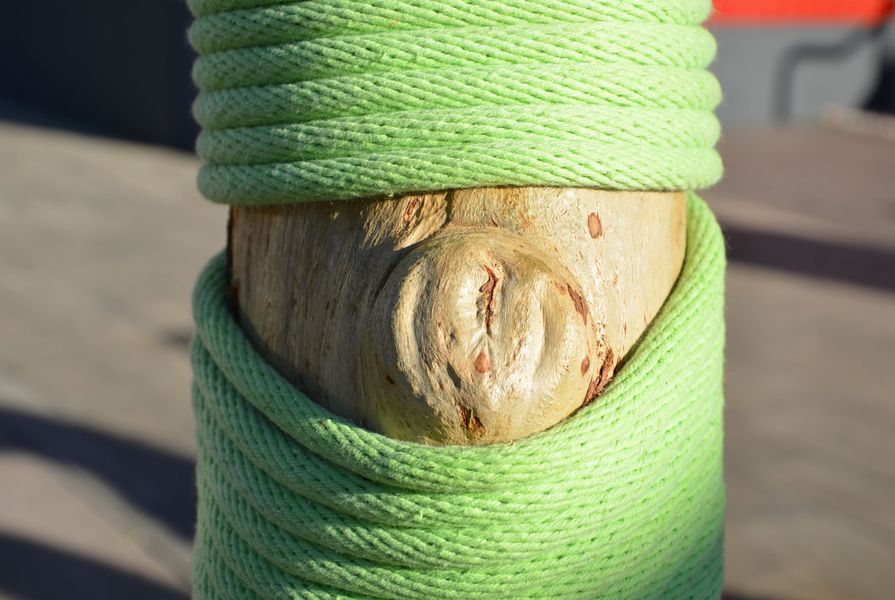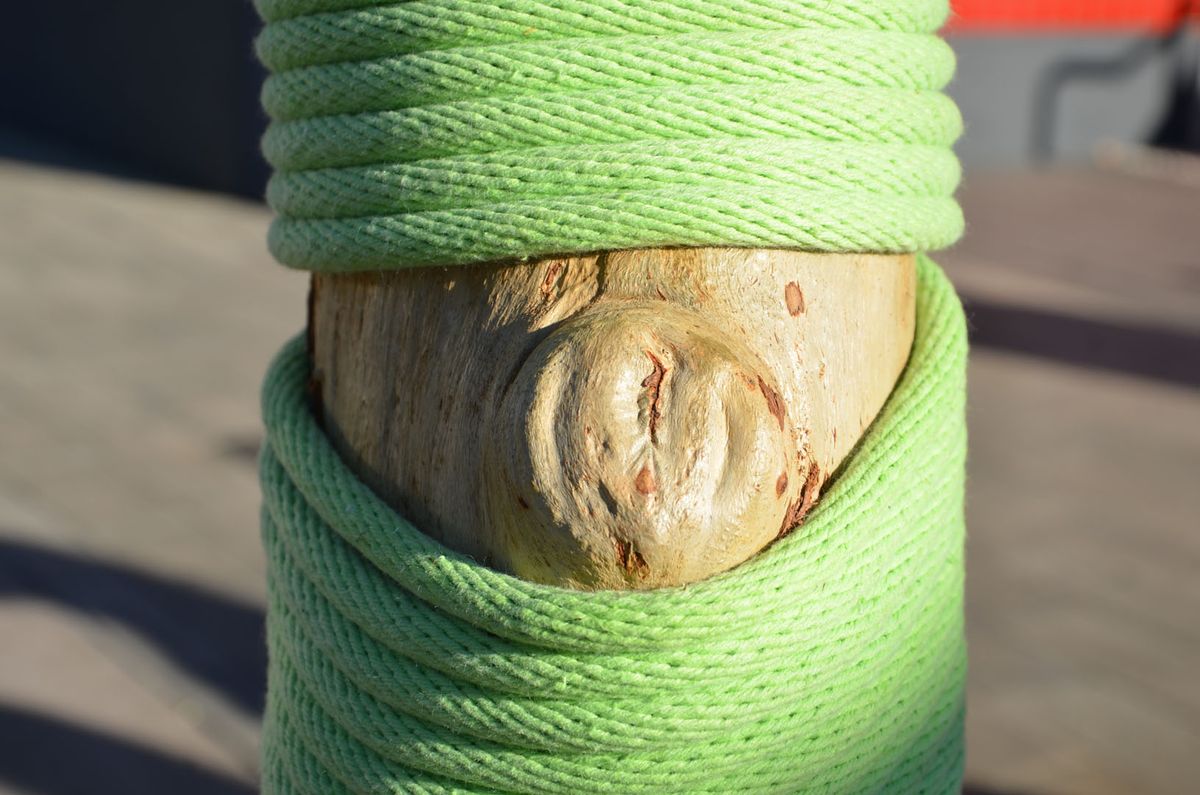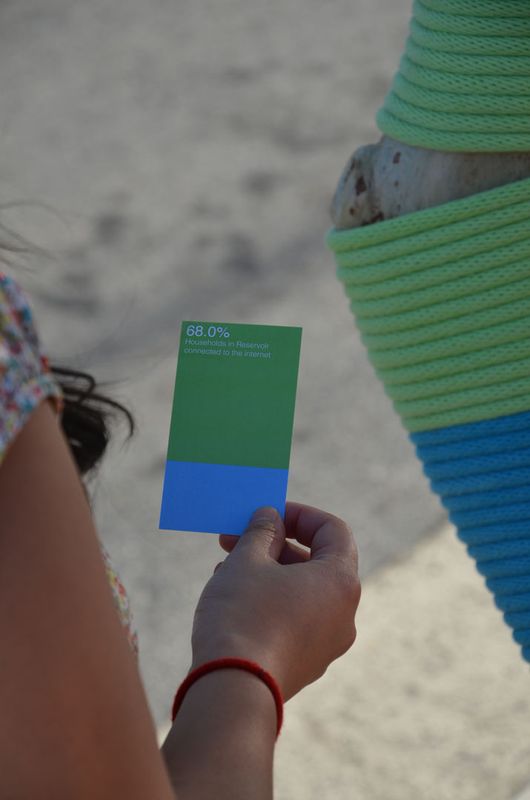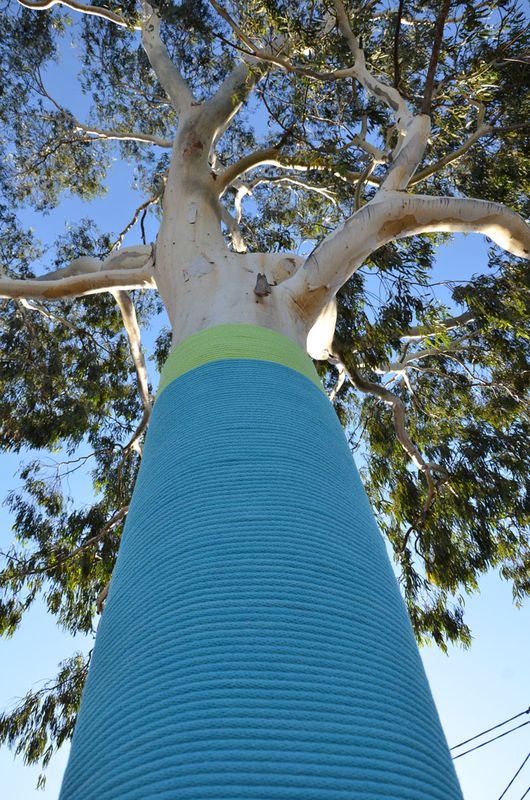With its team of dedicated volunteers long gone after an all-night install, Flynn Hart and Dan Nunan of Melbourne’s Pollen Studio found themselves up ladders during the early daylight hours of 1 March 2013. A simple “Hey, what are you doing?” from a passing local business owner speaks of the success of this project as a conversation starter about the diversity and colour of the local community in Reservoir, in Melbourne’s northern suburbs.
A seductive array of coloured, rope-wrapped trees in the main streets of both west and east Reservoir, the Everything Except Walk (EEW) project has its genesis in a quote from Alice Walker’s Pulitzer-Prize-winning 1982 novel The Color Purple. “Everything want to be loved. Us sing and dance, make faces and give flower bouquets, trying to be loved. You ever notice that trees do everything […] we do, except walk?”
The Pollen team and co-collaborators Jason Maling and Ella Hinkley created a project that was originally intended as a “one-night spectacle,” eventually became more of a “happening,” and which transformed the visual into an event of active participation. EEW is a celebration of the local community through a conversation with a key part of the local environment – its trees.
“Challenging the brief was really important to the success of EEW,” says Hart. “As landscape architects we are often presented with a proposal from the client to perform a particular task. Our first questions are ‘Why? What’s the motivation behind the project and why does it need to exist?’”
Pollen was asked to develop EEW for a new arts festival “to announce its arrival” states Craig Rogers, director of True North Reservoir Arts Festival. “The brief called for the main trees in both the west and east Reservoir shopping precincts to be secretively transformed in one night and unveiled on the opening day of the festival – a surprise for the local community.” Pollen’s approach was to broaden the impact and purpose of this “spectacle,” finding a deeper resonance for the installation in a slowly building “happening.” By drawing more and more people in across the course of the three-day festival, EEW would arm participants with information to make connections and further cross-connections throughout the local landscape.
Many months of meticulous planning by the team resulted in a built installation of thirty trees wrapped in 4.5 kilometres of cotton rope, which was looped through clamps and firmly secured. Made locally in Melbourne, the rope was hand-dyed in Ballarat with four colours chosen by the team for their high visibility, contrast and connection to local precinct branding. Pollen, assisted by ten enthusiastic local volunteers, conducted its own conversations with the trees as it set about an all-night “wrapping” event.
Local volunteers helped wrap the trees in the rope.
Image: Flynn Hart
Trees in Edwardes Street, West Reservoir were wrapped in blue and green rope, while trees in Broadway, East Reservoir were wrapped in pink and orange rope.
Image: Flynn Hart
Fifteen blue-and-green tree wraps in Edwardes Street, west Reservoir and fifteen pink-and-orange tree wraps in Broadway, east Reservoir were created, representing fifteen key statistical breakdowns of the Reservoir community, including cultural background and language, household make-up, local services accessed, employment, and income. The statistics had been drawn from both Australian Bureau of Statistics census data and the community profile from the Reservoir Structure Plan [a plan for the activities area around Reservoir Railway Station], forming a graphic code that was then applied to each individual tree.
Tree wraps on both east and west sites became tools of representation rather than mere aesthetic treatments. “Each tree represented an individual within a particular slice of the demographic of the Reservoir community,” says Hart. A significant challenge the Pollen team faced, however, was the physical (and therefore social) divide of east and west Reservoir by a series of major roads, a railway station and a railway line.
The Pollen team developed a set of small cards that spoke to the code on each of the trees. During the festival these were distributed to local business owners and festival participants alike. Like kids swapping footy cards in the schoolyard, participants began to collect the cards, comparing and contrasting the information and detail on them, seeking cards they didn’t have. These cards then became agents for further exploration of the project, encouraging participants to move out into the local landscape to explore, compare and connect with the corresponding trees. The result was many unexpected interactions with the trees, from forms of orienteering to spontaneous tree hugging.
Most importantly the cards provoked participants to cross over the east/west divide and created a project continuum. “Everything Except Walk stitched the sites together and into itself,” says Nunan.
As Pollen’s practice is one of “process” over and above “outcome,” curating the journey with EEW was essential. In our world of clients and budgets, designers are often firmly focused on a final result, with little time and attention given to how they got there. As a public-art project EEW allowed a much greater freedom to explore the journey and as such drew significantly from the conversation provoked by and connections made through its creation, rather than from an implied reading of its final physical form.
The strength of the project’s success lies in Pollen seeking out a well-rounded team of collaborators. Jason Maling, mentor and inspiration to Pollen, is an artist and was the project’s provocateur, bringing a level of questioning to the project’s intent. Ella Hinkley, with her rich background in the arts and events, was the catalyst for material choices and the effective rollout of the project.
The patina has now faded on the ropes, which still remain in situ in Reservoir. It’s as if the landscape has taken the data under its wings and become wise. So what of the creators and collaborators? What have they drawn from listening to the trees?
“We think there is some significance in the idea that the landscape can ‘speak’ to us and that we need to tune our perceptions in order to listen and understand,” says Pollen Studio. “The same goes for listening to people. By inhabiting the space during the intervention, it helps give a voice to the action, which people respond to in a much more positive way.”
True North Reservoir Arts Festival runs 21-23 March 2014.
Credits
- Project
- Everything Except Walk
- Design practice
- Pollen Studio
Melbourne, Vic, Australia
- Project Team
- Dan Nunan, Flynn Hart
- Consultants
-
Collaboration
Jason Maling, Ella Hinkley
Videographer Andre Stamatakakos
Volunteer coordinators Xavier Cadorel, Dan Cuttiford, Michelle de Aizpurua, Liezl Hanekom, Elly Russell, Dai Le, Brydie Naismith, Brenda Stafford
- Site Details
-
Location
Melbourne,
Vic,
Australia
- Project Details
-
Status
Built
Design, documentation 3 months
Category Landscape / urban
Type Culture / arts, Exhibitions
Source
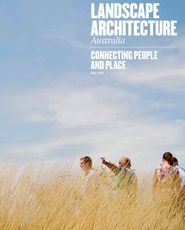
Review
Published online: 3 May 2016
Words:
Elizabeth Cummins
Images:
Flynn Hart
Issue
Landscape Architecture Australia, August 2013

